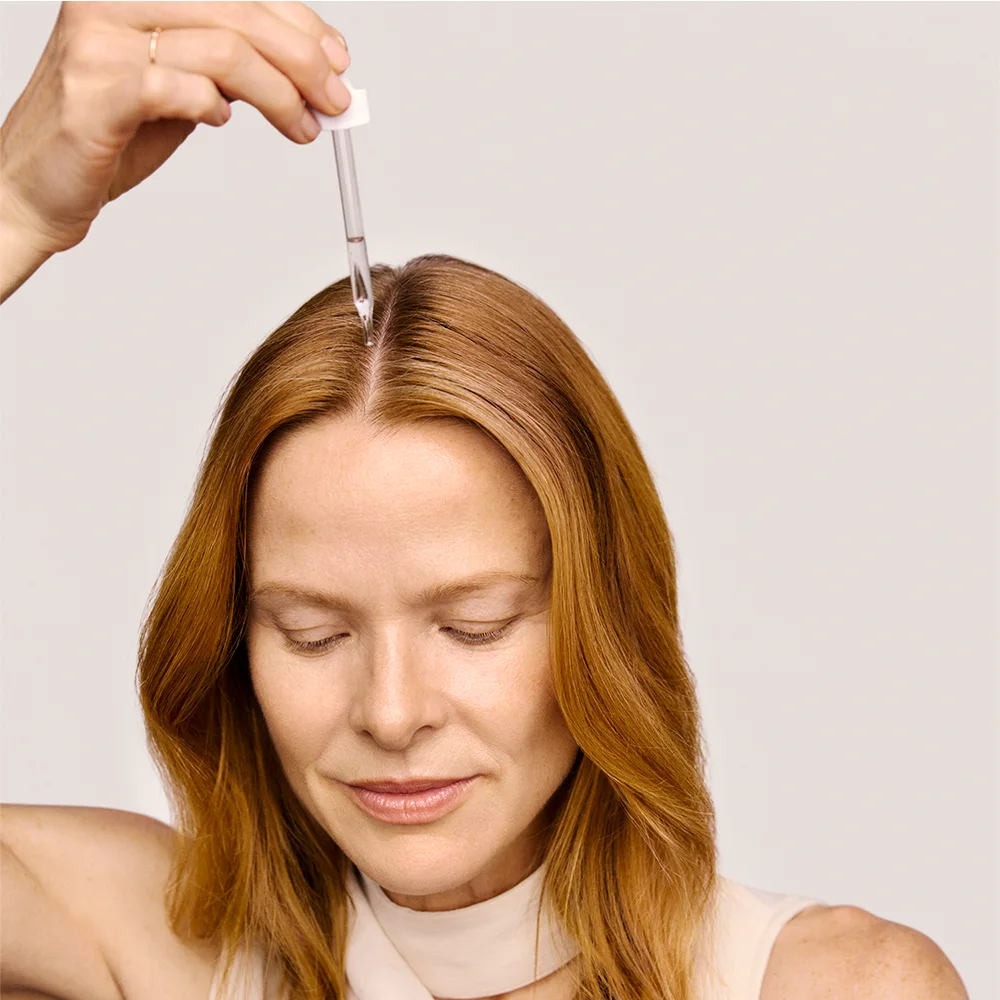Here's what we'll cover
Here's what we'll cover
Here's what we'll cover
Hair thinning or hair loss in women can be a distressing experience. It can affect a woman’s confidence and self-esteem, and they may look for ways to stop hair loss or regain a full head of healthy hair. Many options exist for treating a woman’s hair loss, one of which includes a hair transplant.
Hair transplants are often thought of as a procedure only for men who have lost hair, but some women may be good candidates for hair transplants as well. This article will review the female hair transplant process.
What causes hair loss in women?
Women tend to experience thinning hair in a different pattern than men. You may have heard of male pattern baldness, and with this type of hair loss, men lose hair on the top of their heads and at the front of their hairlines. But this isn’t just a condition that affects men; many women experience female pattern hair loss, caused by the same condition as male pattern baldness, called androgenic alopecia. In women, this typically causes the hair part to become wider, with hair loss occurring more diffusely over the head. It doesn’t usually end in complete baldness like many men can experience (Fabbrocini, 2018).
Although women’s hair loss can start as early as their teenage years, it is often more pronounced after menopause.
Hair loss is frequently due to hormonal changes. With female pattern hair loss, the hair follicles can shrink, causing the hairs that grow to become thinner and thinner until eventually, the follicles don’t produce hair any longer. Sometimes other medical conditions, such as iron deficiency or thyroid disorders, will need to be ruled out as possible causes (Fabbrocini, 2018).
What is a hair transplant for women?
One of the available treatments for female pattern hair loss is a surgical treatment called a hair transplant. This surgery involves taking hair follicles from other parts of the scalp, usually from the back of the head, and transplanting those follicles into the areas experiencing hair loss. The donor hair is placed into the scalp in a way that will hopefully appear natural, with new hair growth occurring in the same direction as the existing hair.
This can be a more tedious procedure for women than for men since women don’t tend to have large bald areas ideal for hair transplantation. Instead, with more diffuse thinning, the hair may be more difficult to transplant. Women may also not have donor sites that are as robust, since hair loss tends to be more diffuse through the scalp (Fabbrocini, 2018).
How much are hair transplants for women?
The cost for each woman’s hair transplant can vary, depending on factors such as the surgery center fees, the hair transplant surgeon’s fee, and how large of an area is being treated. For example, a full head of hair is likely to be more costly than a smaller area. For those who require many hair grafts to be transplanted, the cost is going to be higher.
Some estimates of hair transplant procedure costs are between a few thousand dollars and over $10,000. This cost is also unlikely to be covered by insurance, as it is considered a cosmetic procedure that’s not medically necessary.
Hair transplant side effects
Hair transplant is typically a safe procedure without many significant side effects. However, with any surgical procedure, there can be some risks associated with it. Some of these risks and side effects can include (Zito, 2022):
Infection
Bleeding
Swelling of the scalp
Numbness of the scalp
Epidermal cyst development
Telogen effluvium (the temporary loss of existing hair near the transplanted hair)
Risks associated with any anesthesia given
Other hair loss treatment for women
Hair transplants for women are typically a last resort after trying other treatments. Several other treatment options exist for women looking to improve hair thinning.
The topical medication minoxidil (Rogaine) is an effective treatment for hair thinning. The topical foam is applied either once or twice a day, every day. It can take up to 6 months to see a difference in hair growth, and it may even take a full year of consistent use to see its full effects (Fabbrocini, 2018).
A more invasive (though less invasive than hair transplants) option is platelet-rich plasma (PRP) injections. With PRP injections, a blood sample is taken from the patient and the plasma and platelets are separated from the full blood sample. These are then injected into the scalp. PRP treatments have been combined with hair transplantation to help provide some of the growth factors and nutrients hair needs to grow (Fabbrocini, 2018).
Other medications and supplements have been suggested to be helpful for hair regrowth, but many don’t have the backing of solid clinical research to prove their effectiveness. If you’re struggling with hair loss or thinning hair, see a dermatologist to discuss your options.
Women's Oral Minoxidil Important Safety Information: Read about serious warnings and safety info.
DISCLAIMER
If you have any medical questions or concerns, please talk to your healthcare provider. The articles on Health Guide are underpinned by peer-reviewed research and information drawn from medical societies and governmental agencies. However, they are not a substitute for professional medical advice, diagnosis, or treatment.
References
Fabbrocini, G., Cantelli, M., Masarà, A., et al. (2018). Female pattern hair loss: A clinical, pathophysiologic, and therapeutic review. International Journal of Women's Dermatology , 4 (4), 203-211. doi:10.1016/j.ijwd.2018.05.001. Retrieved from https://www.sciencedirect.com/science/article/pii/S2352647518300224
Zito P. & Raggio B. (2022). Hair transplantation. StatPearls. Retrieved on Nov. 19, 2022 from https://www.ncbi.nlm.nih.gov/books/NBK547740/










